Monday June 10, 2024
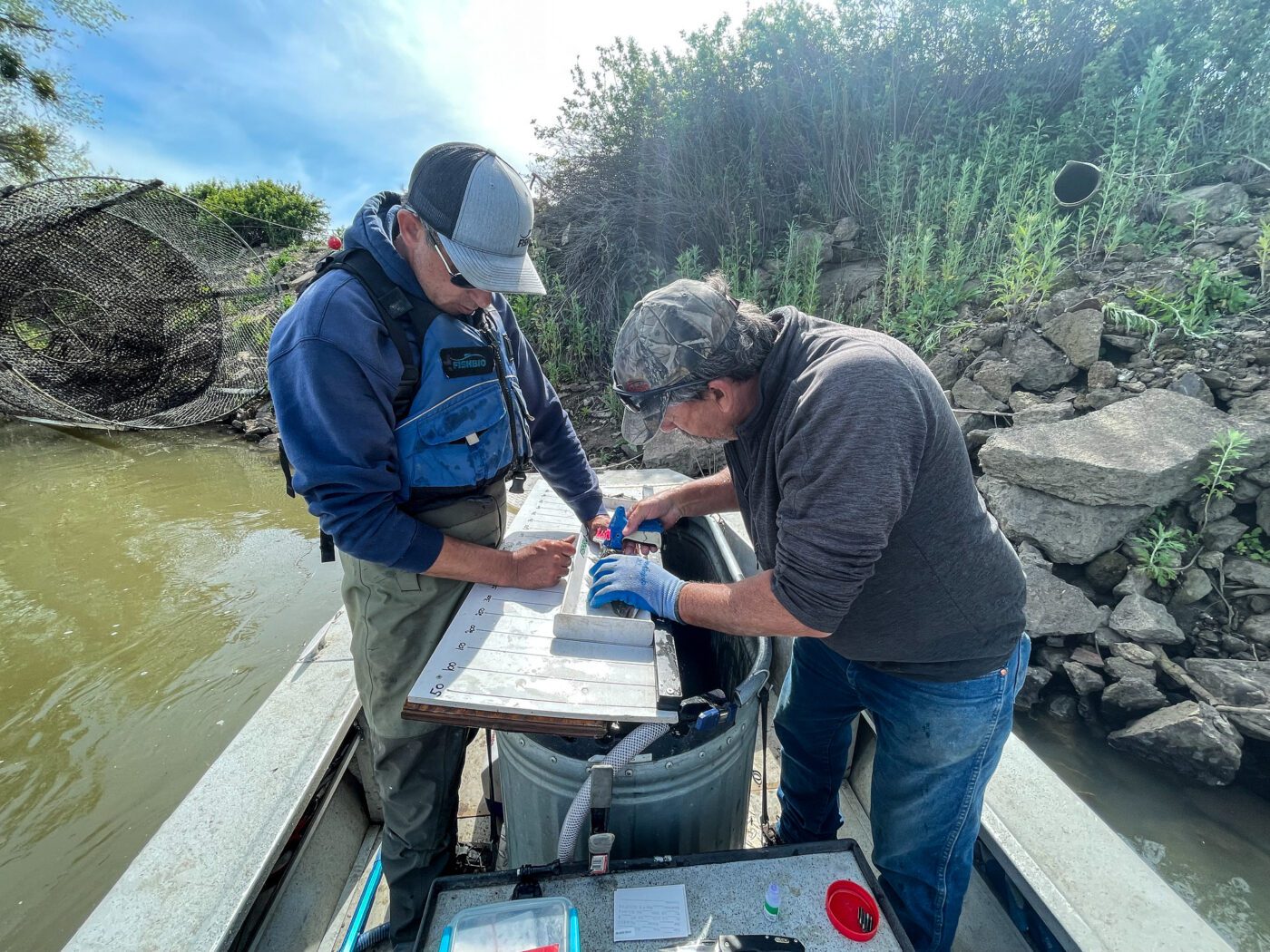
Fisheries technicians (often referred to as “fish techs,” for short) are the backbone of the management, monitoring, and conservation of fisheries. Technicians may be hired seasonally or permanently, and they may spend all their time on one specific project or aid in a variety of projects. Techs must be well-versed in a wide array of tools and techniques, and when beginning a new project, they often complete rigorous training to prepare them for upcoming responsibilities. From rotary screw trap operations, to fyke net or fish weir monitoring, to snorkel or electrofishing surveys, handling fish and working in sensitive aquatic environments requires skill and precision – and a healthy obsession with fish, of course! But what does a day in the life of a fish tech look like? To provide a glimpse into the day-to-day of fisheries technicians and a snapshot of the diverse activities involved in fisheries work, we’ll delve into some of the tasks that FISHBIO technicians take on.
One gear commonly operated by FISHBIO’s technicians to monitor populations of out-migrating juvenile salmon are rotary screw traps (RSTs). These rotating cone-shaped traps must be carefully positioned and anchored in streams to ensure optimal fish capture rates, which is where technicians’ skills and expertise come into play. Techs meticulously adjust RST placement to avoid common pitfalls: setting it too close to the bank may miss the main fish migration routes, while placing it too far into the stream could risk catching debris or endangering the trap. Technicians are also responsible for assisting with daily RST checks, collecting important data on any captured species and sometimes marking fish before releasing them back into the river. Fish marking is an important tool in tracking fish movement and making population estimates, and it can be done by clipping a tiny piece of a fin, implanting a PIT (passive integrated transponder) tag, or giving the fish a temporary tattoo using brightly pigmented dye. Such tasks require precision and careful handling to ensure the mark can be detected by future fish techs who may recapture the marked fish and that fish are put through minimal stress and are healthy upon release.
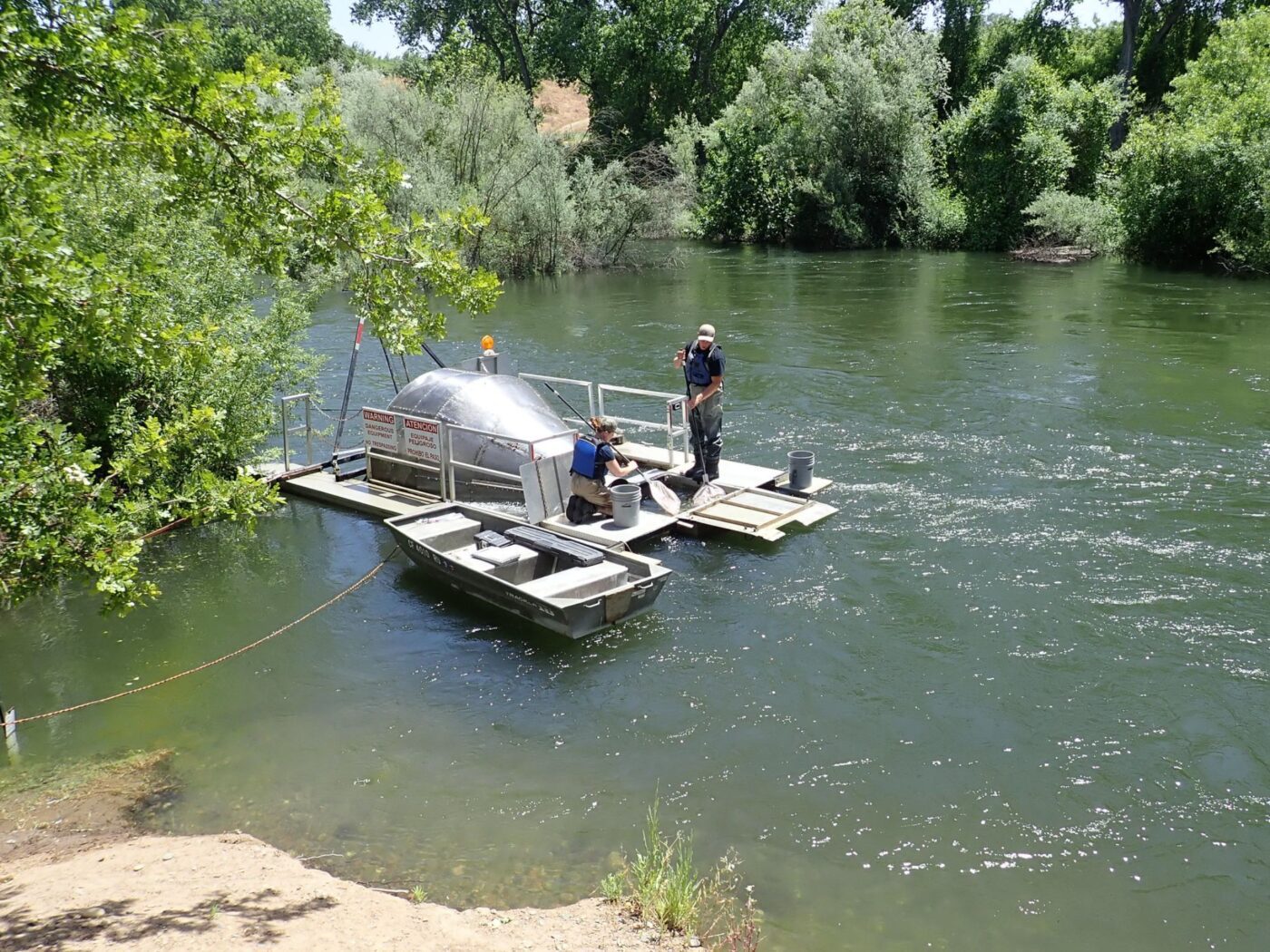
Fisheries technicians checking rotary screw trap for captured fish
Beyond deft equipment and fish handling skills, fish techs will often need to employ their knowledge in fisheries ecology and stream morphology. Fyke nets, characterized by their series of hoops and a long lead net, can be used to sample the fish community in habitats as varied as floodplains, lagoons, and estuaries. Technicians must deploy these nets based on a deep understanding of the local aquatic environment. Knowledge of where fish are likely to congregate based on flow conditions, and the optimal times for net placement are critical, particularly in tidally-influenced areas where water levels can fluctuate dramatically.
Another complex gear type used by fish techs are fish weirs – these barrier systems are designed to count and collect fish, and they require constant monitoring and adjustment. Technicians fine-tune and clear debris from the panels and gates to ensure optimal water flow and fish passage. They often perform on-site repairs and adjustments to adapt to changing river conditions, requiring a little elbow grease and the occasional power tool to ensure that weirs function efficiently throughout the season. Sometimes techs have to employ their electrical skills, as they are tasked with ensuring the solar-powered computer running the fish counting system in the weir is receiving enough power and operating properly.
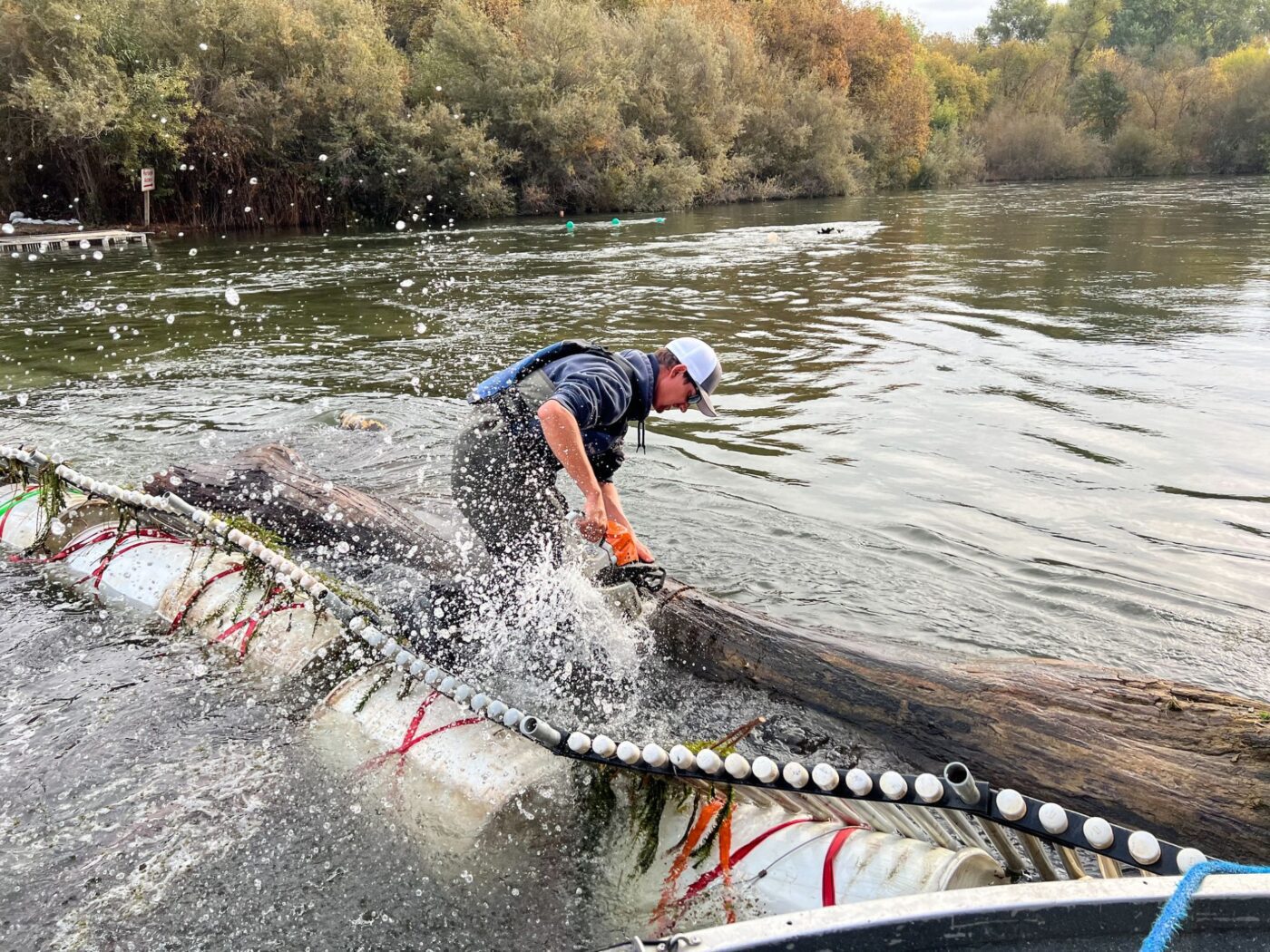
Fisheries technician using a chainsaw to cut a log that was caught on a fish counting weir
For certain projects, techs apply potentially dangerous gears to actively sample a fish community. In the case of electrofishing operations, fish techs must combine technical skill and safety awareness with a detailed understanding of fish physiology. Technicians may use either portable electrofishing devices carried like a backpack, or specialized boats equipped with anodes that emit controlled electrical pulses, to stun fish temporarily. This method demands precision: the voltage and frequency of pulses are carefully managed to balance the effectiveness of fish capture with the health of the fish. Technicians must work quickly to measure, tag, and return fish to the water in good condition.
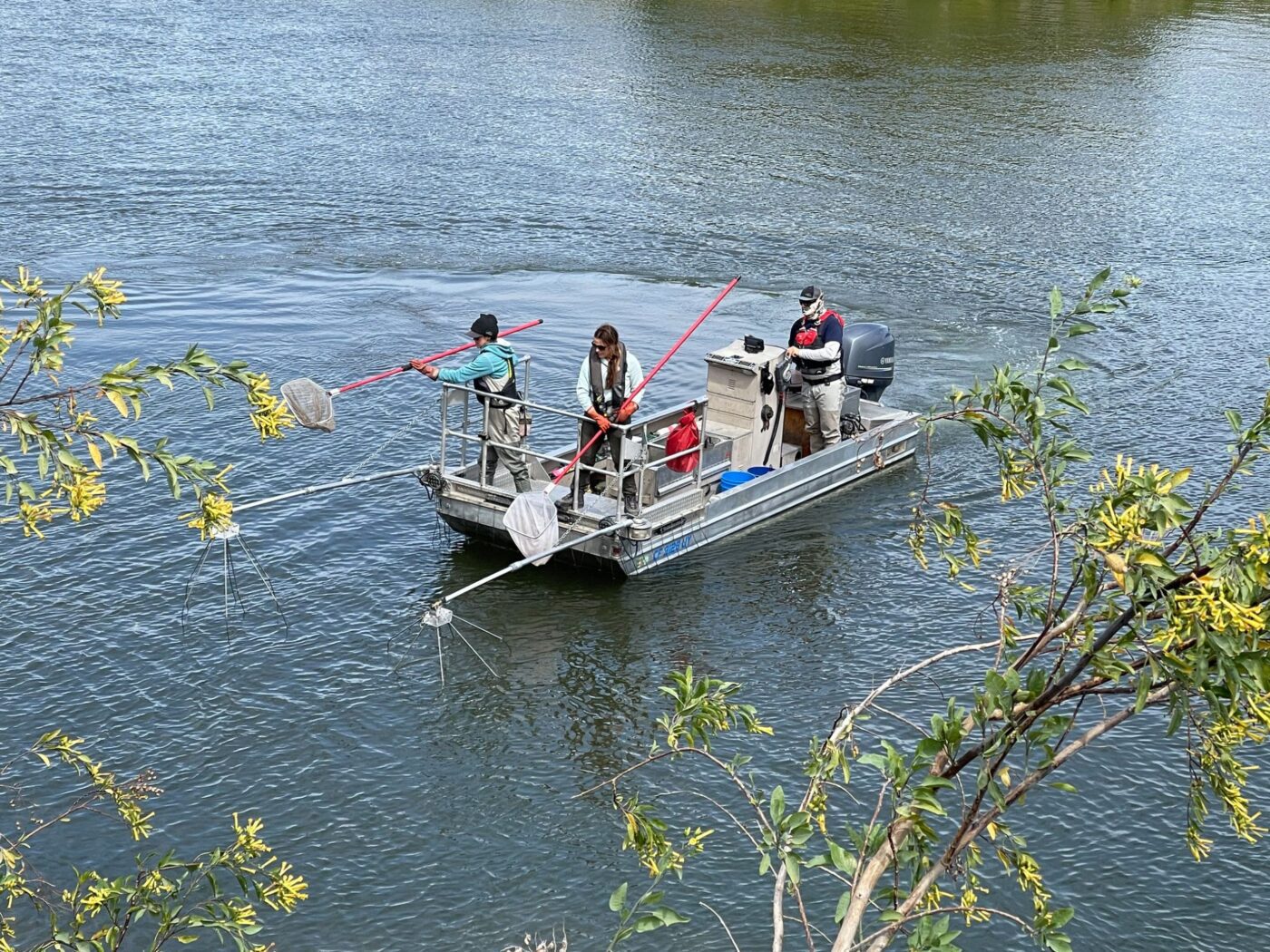
Electrofishing on the Sacramento-San Joaquin Delta
Another form of fish observation are snorkel surveys. Technicians, equipped with wetsuits, masks, and snorkels immerse themselves in the aquatic environment to directly observe fish behavior and habitat conditions and obtain fish counts. This hands-on method requires a strong swimming ability in swift water conditions, but also quick fish identification skills and an acute awareness of surroundings, especially in rivers with heavy boat traffic. Though physically demanding, tasks such as these are a blast, and can make a fish tech’s work day feel like recreation.
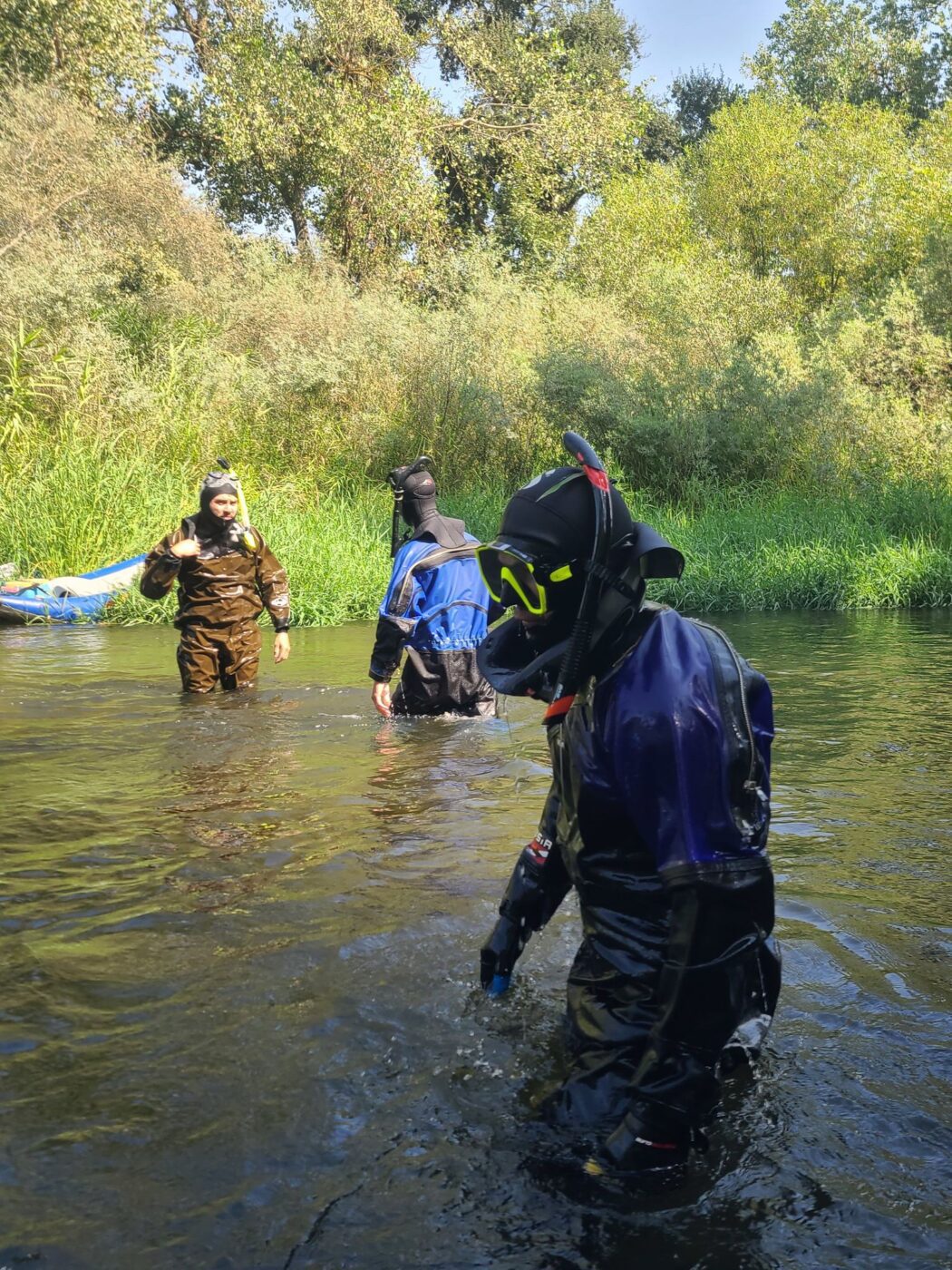
FISHBIO snorkel survey
The maintenance and disinfection of field gear, though less glamorous, are also critical parts of a fish tech’s job. After each survey outing or trap check, all equipment – from boots to boats – is thoroughly cleaned to prevent the spread of invasive species. This routine also ensures that the gear remains in optimal condition for future field work. Through rain and shine, the life of a fisheries technician is a busy one, filled with these and many other tasks, each contributing to the larger goal of managing and conserving important freshwater fish and their habitats. Their work, often conducted behind the scenes, is vital to ensure that our rivers continue to thrive, providing critical freshwater resources and a home for diverse fish populations.
Header Image Caption: Fisheries technicians collecting data and tagging fish from a fyke trap.
This post was featured in our weekly e-newsletter, the Fish Report. You can subscribe to the Fish Report here.
